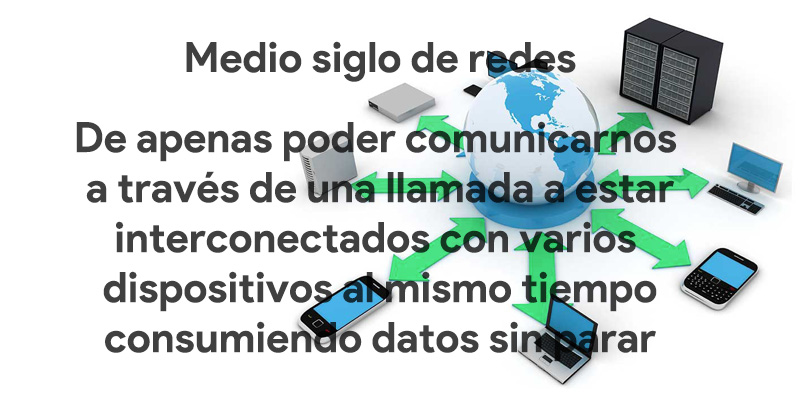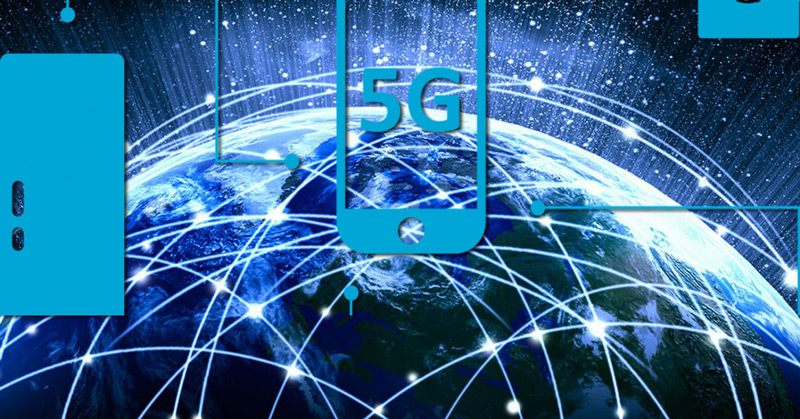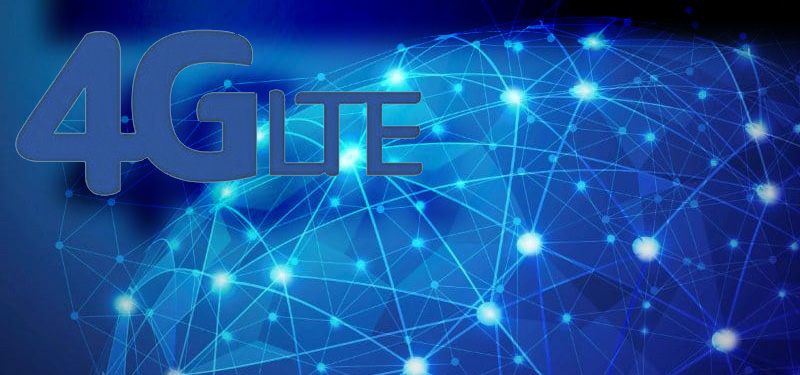
UPDATED ✅ Do you need to KNOW how many types of Mobile data Networks there are and you don’t know how to do it? ⭐ ENTER HERE ⭐ and discover what they are ✅ EASY and FAST ✅
Knowing how mobile networks work is not something usual unless you are a telecommunications lover. We usually learn how to use a phone and make calls, send messages and connect to our social profiles.
However, for that to be possible, there is an arduous communication work behind which includes, of course, a mobile network, which is the channel through which all the information you exchange with the world passes.
We will see today precisely what are mobile networks, how they work, what they are for and which ones exist, with their corresponding differentiating characteristics.
What are mobile data networks and what are they for?
A mobile data network is the system that is required for communication between a central and the devices that connect to it. (in this case, mobile phones) and also between exchanges.
It is made up of visible and non-visible elements: antennas, radio waves, transmitters and receivers (found on communication towers or base stations), traffic-generating devices, a network core, andof course, mobile devices with which we communicate, which are the points where the information is opened, expanded or interpreted, reaching the final recipient (the user).
Each network works on a geographical area, which is normally delimited in a grid with cells. In these the stations are placed; this is usually done either at the vertex between several cells or in the center of each cell. This is decided based on the conditions of the place (at the physical level) and the number of phones that will use the network.
How does a mobile data network really work?

We will start by stating that the network by itself is not capable of fulfilling its function to the user. In addition to this, it is necessary to find switching telephone exchanges to connect to, and that are between the mobile network system and our telephone.
That said, it is worth noting that communication between phones is made possible by sending and receiving radio signals, which have low power. So that they can travel to nearby points, they exchange with the signals of nearby antennas (which are connected to radio transmitters and receivers and which, in turn, are also connected to the other telephone networks), thus being able to “bounce” to move as far as necessary, carrying the message both in the same network as on a different one that the recipient of the message is using.
When we call from a mobile phone, this begins by studying the coverage in the area where it is located to check if there is enough power to meet the needs of the call.
If it is the case that adequate coverage is available, a connection is made with the closest telephone station, which is the one that actually establishes the call and provides support to maintain it until one of the two participants in the conversation hangs up or until there is no longer sufficient coverage at that base station.
Of course, the concept has been developed a lot, coming into play the SMS sendingMMS, video calls and, of course, the Internet access from mobile devices. This has meant that, obviously, the needs are different and that the networks have had to be modified according to them.
What types of mobile networks are there and what do the connection symbols mean?

Advances in telephony and communication in general have allowed us to use (and have used) over the decades several different mobile networks. These are the main mobile connection symbols:
GSM or 2G
The acronym originally stood for Group Special Mobile and actually, Global System for Mobile Communication. It has also been known as the 2G network for being the second generation. Its about first fully digital mobile phone system. It was with this network that the use of these devices became accessible to everyone.
It offers very good results in voice communication but is not suitable for working with data, since the speed handled between the network and the device was, in the first instance, 900 bits per second. This is possible but done very slowly and never in combination with voice calls.
It uses the GSM 850, GSM 900, GSM 1800 and GSM 1900 frequency bands. Although there are currently many others that we will see below, all phones continue to have compatibility with at least one of these bands so that the user can use the 2G network at times when they do not need anything more elaborate.
GPRS
It is the acronym for General Packet Radio System. This network is the 2.5G network. Born to solve the problem of sending non-switched network-telephone dataachieving a speed of 56,000 to 144,000 bits per second (from network to mobile, vice versa the 9600 were maintained).
This is ideal because when we connect to the internet, we usually receive much more data than we send, so keeping a low speed in the phone-to-network direction is adequate so as not to consume more battery power than necessary. His system consists of use of several the spaces that remain unused when we do not use the voicewhich multiplies the speed.
EDGE
the name means Enhanced Data Rate for GSM Evolution. It is the unknown 2.75G network. It is a version of the previous one that what it does is increase the speed the closer we are to the antenna. We come up with a data modulation that differs to achieve this.
UMTS or 3G
Although we know her as 3Gits name is UMTS, from Universal Mobile Telecommunication System. For society it represents an absolute change: video calls are allowed and the data connection is given at 384000 bits per second.
Performance in terms of coverage prioritize nearby devices, which go on to receive the bulk of the antenna’s resources, leaving the distant ones unprovided. Therefore, many more antennas (3-1) are necessary to offer the same coverage. As is evident, speed requires power and this, battery consumption, the main reason why we still find users who use only 2G.
HSPA
This network is High Speed Packet Access, known as 3.5G. It stands out for surpassing even the speed of many ADSL services, with up to 14.4 MBit/s central-device.
Afterwards, we find that There are two variants of this, which are the HSDPA and the HSUPA.which will improve the speed in this direction in reverse respectively, reaching 2 MBit/s in the case of the latter.
HSPA+
This is the evolution of the HSPA network and, in short, what it offers is an increase to the 88 Mbps in the direction from the panel to the device and 22 Mbps in the opposite direction. Therefore, it would be the 3.75G network.
LTE or 4G

Abbreviating the term Long Term Evolution Y known as 4Gfor considering the fourth generation network, we have the LTE network. Works with Orthogonal Frequency Division Multiplexing technology (OFDM) and stands out for solving the problem that occurred with 3G coverage in points distant. With it the coverage remains constantwhether there is much or little.
It is quite advanced and we find it in a number of devices, although we have to say that no operator is yet certain that taking the step towards the 4G network by eliminating the others is adequate, so that any current phone has the operator that have, it will allow you to connect to it but also disable its connection to enjoy the benefits of 2G in cases where it is more convenient.
Even so, we already have two options of this standard: LTE FDD and LTE TDD. There are bands reserved for one and the other and each operator works with the most convenient license, although we have no problem, since our phones support both. In the first case we find a given communication on two different frequencies that are within the same band. In the second, we find that communication in both directions uses a single frequency.
LTE Advanced is a technology that includes MIMOan effective tool that allows the use of both multi-band and up to four antennasconstituting what we know as Carrier Aggregation, which would be a functionality that allows us to receive information at 3 GBps and send it at 1.5 GBps.
LTE Advanced Pro (or 4.5G) goes a step further by exceed the speed of FFTH fixed networks, which is achieved thanks to the improvement and subsequent use of up to four technologies. But, the most characteristic of this network is the use of the 5GHz Wi-Fi band.
IMT-2020 or 5G
The 5Gwhich is often confused with the Wi-Fi band that we just discussed, is practically a reality, ready to reach us in 2020 (hence its name).
Their trivial capacity will be 100 Mbps and it is intended to even reach 10 Gbps depending on the circumstances. Your latency will be 1mssince a high-capacity channel element will be required to allow so much information to move, including data transmission and VoLTE voice calls.
networks